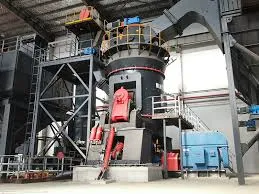As we head deeper into 2025, the global cement industry is evolving at a rapid pace. With rising energy costs, stricter environmental regulations, and increasing demand for high-quality cement, cement manufacturers are rethinking the tools they use in their grinding processes. One of the biggest decisions a cement plant faces today is choosing between the vertical roller mill and the traditional ball mill.
Both technologies have their strengths, but the real question is: which one is better for cement grinding in 2025?
In this blog post, we’ll break down the key differences, explore the advantages of each, and explain why many plants—especially those using solutions from Cementl—are turning to coal vertical roller mills and VRMs for a more efficient, sustainable future.
Understanding the Basics
Ball Mill: The Traditional Grinder
Ball mills have been used in the cement industry for over a century. They work by rotating a drum filled with grinding media (like steel balls), which crushes raw materials into fine particles through impact and attrition. While they’ve been reliable for decades, ball mills come with limitations in efficiency, energy consumption, and maintenance.
Vertical Roller Mill (VRM): The Modern Alternative
A vertical roller mill uses large rollers to crush and grind materials as they pass over a rotating grinding table. VRMs also incorporate drying and separation in a single unit, making them a compact and energy-efficient solution—especially important for today’s fast-paced cement production environments.
Performance Comparison: Vertical Roller Mill vs Ball Mill
Let’s look at how these two technologies stack up in real-world cement grinding applications.
| Feature | Ball Mill | Vertical Roller Mill |
| Energy Efficiency | Lower (20-25% more energy) | Higher (uses less electricity) |
| Footprint | Larger setup required | Compact, integrated system |
| Maintenance | More frequent & expensive | Lower due to fewer moving parts |
| Drying Capability | Requires separate dryer | Built-in drying with hot gases |
| Product Quality | Good but variable | More consistent and uniform |
| Automation Compatibility | Limited | Easily integrated with AI/IoT |
As the chart shows, vertical roller mills clearly take the lead in several key areas, making them the preferred choice for modern cement grinding operations.
The Rise of Coal Vertical Roller Mills
Fuel preparation is just as important as raw material grinding in cement production. Coal vertical roller mills are specially designed to handle coal and petcoke grinding efficiently and safely. Unlike traditional ball mills that may require extra steps for drying and particle separation, Cementl’s coal vertical roller mills perform all these tasks in a single streamlined process.
These mills offer:
- High drying capacity
- Excellent particle control
- Reduced fuel wastage
- Lower emissions from optimized combustion
In 2025, when sustainability targets are tighter than ever, coal VRMs can help plants stay compliant while cutting fuel costs.
Why Cementl’s Vertical Roller Mills Are Leading the Way
One reason vertical roller mills are dominating in 2025 is innovation. And Cementl is at the forefront of that innovation.
Cementl’s vertical roller mills are built for:
- Maximum energy efficiency
- Seamless integration with AI and IoT
- Durability and low maintenance requirements
- Smart diagnostics for predictive maintenance
Whether you’re grinding raw materials, cement clinker, or fuel, Cementl’s VRMs are engineered to deliver high output, superior product quality, and long-term cost savings.
Their coal vertical roller mills are especially designed for safety, featuring built-in explosion-proof mechanisms, temperature monitoring, and automated control systems.
Looking Ahead: Why VRMs Make Sense in 2025 and Beyond
In 2025, the challenges facing cement producers include:
- Rising global energy costs
- Pressure to lower CO₂ emissions
- Increasing automation across manufacturing sectors
- Need for consistent, high-quality product
- Regulatory compliance with sustainable practices
Vertical roller mills check all these boxes. They use less energy, are easy to automate, and can operate with minimal downtime. On the other hand, while ball mills still serve a purpose in some niche applications, they are slowly being phased out in high-efficiency plants.
Final Verdict: Vertical Roller Mill Wins in 2025
So, what’s the better option for cement grinding in 2025?
✅ For energy savings: Choose a vertical roller mill
✅ For environmental compliance: Go with a coal vertical roller mill
✅ For low maintenance and smart control: Cementl VRMs are unbeatable
✅ For future-proofing your plant: Vertical is the way to go
While ball mills had their moment, the future belongs to Cementl’s advanced vertical roller mills. If you’re planning upgrades or building a new plant, choosing a VRM will help you stay competitive, efficient, and sustainable.



